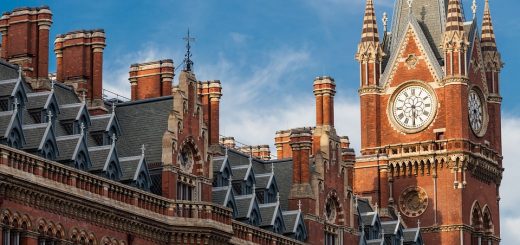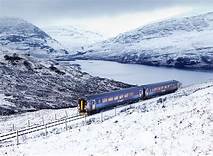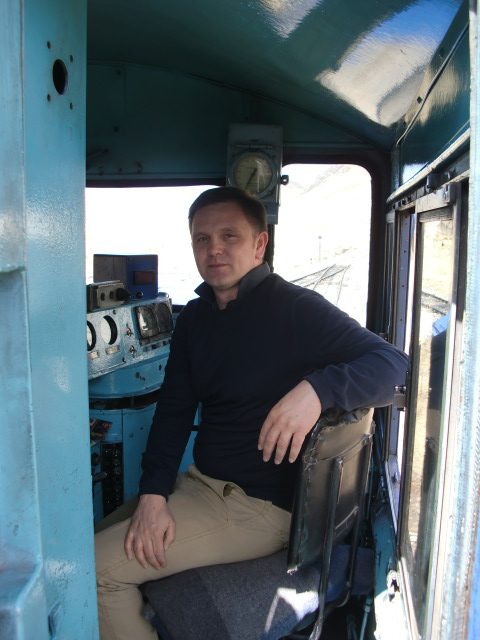Eurostar: Routes, Travel Classes and All You Need to Know
Eurostar is one of Europe’s best-known train operators, and this guide covers everything you need to know about it, including its routes, travel classes, and on-board facilities.
What is Eurostar
Eurostar is an international high-speed train operator, primarily owned by the French Railways (SNCF), with smaller shares held by the Belgian Railways (SNCB) and investment funds.
Eurostar is best known for operating passenger trains through the Channel Tunnel linking the UK with France, though it also runs high-speed services on the continent following its merger with Thalys.
Book Eurostar tickets through NS International (Dutch Railways)
What routes are operated by Eurostar
The primary routes operated by Eurostar connect Britain with France, Belgium, and the Netherlands:
– London to Paris
– London to Brussels, with some services continuing from Brussels to the Netherlands, stopping in both Rotterdam and Amsterdam.
Some trains between London and Brussels make an intermediate stop at Lille.
Eurostar also operates some high-speed train routes on the continent which were previously run by Thalys.
Since the merger between Eurostar and Thalys, these trains have been rebranded as Eurostar, meaning you can now also take a Eurostar high-speed train on the following routes:
– Brussels to Paris
– Amsterdam to Paris (via Rotterdam, Antwerp and Brussels)
– Cologne to Paris (via Aachen, Liege, and Brussels)
– Dortmund to Paris (via Essen, Duisburg, Dusseldorf, Cologne, Aachen, Liege, and Brussels)

Eurostar train at London St Pancras station. ©AndyBTravels
Eurostar stations
In London, Eurostar uses the magnificent Victorian-era St Pancras International as its terminus, while in Paris, the equally impressive Gare du Nord serves as its terminus.
Brussels-South, known as Bruxelles-Midi in French and Brussel-Zuid in Dutch, is the Eurostar station in the Belgian capital.
In Lille, Eurostar uses Lille-Europe station, which is just a few hundred metres’ walk from the city’s main railway station, Lille-Flandres.
In all other cities, Eurostar simply uses the primary station of the city, such as Amsterdam Centraal in the Dutch capital, Köln Hauptbahnhof (Köln Hbf) in Cologne, and Liège-Guillemins in Liège.

The Eurostar train from London to Amsterdam has arrived at the station in Brussels. ©AndyBTravels
Boarding procedure on Eurostar trains to/from London
There is a difference between Eurostar trains to/from London and the Eurostar (formerly Thalys) trains operating routes on the continent in terms of boarding procedures.
If you take a Eurostar train to or from London, you must first check in at the dedicated Eurostar terminal, located at London St Pancras, Paris Gare du Nord, Lille-Europe, Brussels-South, Rotterdam Centraal, and Amsterdam Centraal.
This basically means that your ticket will be scanned, allowing you to pass through the gates.
Check-in must be done at least 30 minutes before departure (15 to 20 minutes for Eurostar Premier passengers and Carte Blanche loyalty cardholders), although it’s advisable to arrive at least 1 to 1.5 hours before departure to complete all formalities.
After check-in, you must go through airport-like security checks, although there are no limits on liquids you can carry on board in your luggage.
There will also be passport control and customs at the station when travelling to or from London.
When travelling from London to the continent, both British exit formalities and the EU passport check by French police take place at the Eurostar terminal at London St Pancras, while in the reverse direction, both EU exit formalities and British passport control occur.
After this, you are free to spend time in the departures hall which depending on the station may have a duty-free shop, some cafés and bars, or in the case of London, Paris and Brussels, a Eurostar Premier Lounge for those with access.
Once your train departure is called, the gate to the actual platform will be opened and you can board your train to or from London.
When you arrive in France, Belgium, or the Netherlands after your journey, you simply disembark the train – there are no arrival formalities as you’ve already been stamped into the EU when you departed from London.
The same applies when travelling to London, as you’ve already completed British immigration and customs before boarding your Eurostar train.

Eurostar check-in queue at London St Pancras. ©AndyBTravels
Boarding procedure on other Eurostar trains
The boarding procedure for Eurostar (formerly Thalys) trains between France, Belgium, the Netherlands, and Germany is quite different from that for trains to and from London.
In fact, there is no difference whatsoever between boarding a domestic train in, say, France or Belgium, and taking the Eurostar (formerly Thalys), as you simply walk to the platform and board your train.
There is no check-in procedure, no security control, and ticket checks are simply done on the train.
Theoretically, you can just turn up at the station minutes before departure, although it’s best not to leave it too late and to arrive with plenty of time to spare.
Travel classes
Eurostar has three travel classes: Eurostar Premier, Eurostar Plus, and Eurostar Standard.
Standard is equivalent to second class, Plus is similar to first class on most European trains, while Premier is a premium first-class product.
Seating in Standard is two-abreast (2+2 on either side of the aisle), while Plus and Premier both feature the same 1+2 seat configuration.
There are seats opposite each other around a table (as a bay of four seats in all classes, or duo seats opposite each other in Plus and Premier), as well as seats arranged behind each other, and you can select your exact seat on the Eurostar website.
Although there is no difference between the seats in Plus and Premier, Premier has the advantage of fully flexible and refundable tickets.
When travelling to or from London, Premier also grants fast-track check-in and access to the Eurostar Premier Lounge (only at the stations in London, Paris, or Brussels) before departure.

Eurostar Standard. ©AndyBTravels

Plus and Premier seating. ©AndyBTravels
On board facilities, food, and drinks
When it comes to facilities on Eurostar trains, as well as food and drinks served on board, there is a big difference between the trains to/from London and trains between France, Belgium, the Netherlands, and Germany.
When travelling on Eurostar Premier to/from London, you will receive a complimentary hot meal and a premium selection of wines, champagne, and other cold and hot drinks.
In Eurostar Plus, you receive a complimentary cold meal with a drink (wine, beer, or soft drinks) of your choice, along with bottled water and tea or coffee.
In Eurostar Standard, no complimentary snack or drink is included in your fare, although you can visit the café-bar coach to buy something.
You can also bring your own food or drinks on board the train.
Eurostar has recently renewed its catering offer on board its trains to and from London, and especially when travelling in Premier, you can look forward to some quality food.
On the Eurostar (formerly Thalys) trains between France, Belgium, the Netherlands, and Germany, service levels are slightly lower across all travel classes.
In Eurostar Premier, you typically get a light meal with wine, tea, or coffee when travelling between Paris and Brussels, while a snack with wine, tea, or coffee is served between Brussels and Amsterdam or Brussels and Cologne.
Unlike Eurostar trains to and from London, Eurostar Plus does not include any complimentary food or drinks when travelling between France, Belgium, the Netherlands, and Germany.
Just like passengers in Eurostar Standard on these routes, you can either bring your own food and drinks on board or visit the café-bar coach, although this is scaled down compared to the trains to/from London, as it only consists of a couple of vending machines.

Complimentary meal on board Eurostar. ©AndyBTravels
Power sockets and Wi-Fi
On all Eurostar trains, regardless of the route or travel class, you’ll find power sockets at your seat.
Eurostar trains to and from London have both UK-style 3-pin sockets and European 2-pin sockets.
These alternate between seats, so you might have either type at your seat, meaning the seat next to you will always have the other type.
In any case, it’s always best to bring along a travel adapter with a plug converter when travelling between the UK and the EU.
On the Eurostar (formerly Thalys) trains between France, Belgium, the Netherlands, and Germany, you will only find European 2-pin sockets.
All Eurostar trains offer complimentary Wi-Fi internet in all travel classes.

Eurostar trains at London St Pancras. ©AndyBTravels
Conclusion
Eurostar is a high-speed train operator best known for its passenger train service through the Channel Tunnel, linking London with Paris, Lille, Brussels, and Amsterdam.
Since merging with Thalys, Eurostar also operates high-speed train routes on the European continent, running services between Paris, Brussels, Antwerp, Rotterdam, and Amsterdam, as well as between Paris, Brussels, Liège, Aachen, Cologne, Düsseldorf, Duisburg, and Essen.
Eurostar has three travel classes, with Standard equivalent to second class, Plus to first class, and Premier to premium first class.
Note that there are big differences in check-in formalities and on-board service between Eurostar trains to and from London and Eurostar (formerly Thalys) trains between France, Belgium, the Netherlands, and Germany.





